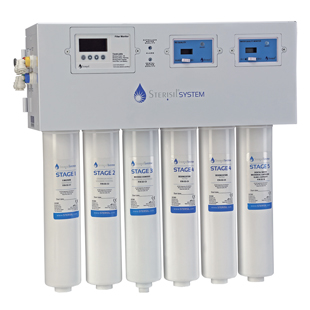 S2K Commerce - Products Dropdown
S2K Commerce - Products Dropdown
 Web Content Viewer - Blog
Web Content Viewer - Blog
The Ultimate Dental Waterline Maintenance Checklist: What Every Practice Needs to Know

Maintaining safe, clean dental unit waterlines (DUWLs) isn’t just a best practice—it’s a critical part of patient safety and regulatory compliance. With biofilm capable of forming in as little as a few days, consistent waterline protocols keep your practice aligned with CDC recommendations and ensure your patients receive care free from harmful microbial contamination.
Whether you're establishing a new infection control protocol or tightening up your current routine, this comprehensive checklist will guide your team through daily, weekly, monthly, and annual upkeep to keep waterlines safe and compliant.
Why Dental Waterline Maintenance Matters
Dental unit waterlines are prone to biofilm buildup because of their narrow tubing and frequent periods of water stagnation. When waterline maintenance is overlooked, microorganisms—including harmful bacteria—can multiply quickly. Contaminated waterlines pose a risk not only to patients but also to providers and the reputation of the practice.
The CDC recommends that water used in non-surgical procedures contain ≤500 CFU/mL of heterotrophic water bacteria. Achieving this requires regular testing, antimicrobial treatment, proper equipment maintenance, and thorough documentation.
Daily Dental Waterline Maintenance Checklist
A strong daily routine prevents the majority of waterline issues. Each morning and between patient appointments, the dental team should:
- Flush waterlines for 20–30 seconds at the start of the day.
- Flush handpieces, ultrasonic scalers, and air/water syringe lines between patients.
- Ensure bottles are filled with distilled or treated water.
- Inspect the bottle and pickup tube for cracks, residue, or discoloration.
- Confirm ongoing waterline treatment products (tablets or cartridges) are present and functioning.
- Wipe down bottle lids and connection points to prevent cross-contamination.
Weekly Maintenance Tasks
Weekly care supports the daily routine and helps catch early signs of buildup or equipment wear.
- Clean and disinfect all dental unit water bottles.
- Inspect bottle O-rings, gaskets, and pickup tubes for wear.
- Check inventory of treatment supplies so your practice never runs out.
- Record all activity in your waterline maintenance log.
Monthly Waterline Tasks
Regular monthly maintenance helps verify the effectiveness of your protocols.
- Conduct water quality testing to confirm CFU counts are within acceptable limits.
- Replace any treatment cartridges if your system requires monthly changeouts.
- Review your log to make sure all daily and weekly tasks are completed consistently.
Quarterly Shock Treatments and Compliance Checks
Even when routine treatment is effective, dental waterlines still require periodic shock treatments.
- Perform a shock treatment using a manufacturer-approved disinfectant.
- Re-test waterlines 24–48 hours after shocking.
- Retrain team members if logs show missed steps or noncompliance.
- Document all corrective actions if any water test fails.
Annual Dental Waterline Review
A yearly deep dive ensures long-term compliance and smooth operations.
- Replace any aging components (pickup tubes, bottle caps, tubing).
- Review equipment manufacturer updates.
- Conduct a full annual protocol review with the infection control coordinator.
- Refresh team training and update your SOP if needed.
Essential Supplies for Waterline Maintenance
Every dental practice should keep these items in stock:
- Distilled water
- Waterline treatment tablets or cartridges
- Shock treatment solutions
- In-office or mail-in water test kits
- Bottle-cleaning supplies
- Replacement parts (O-rings, gaskets, tubes)
- Waterline logs and labels
Final Thoughts
Reliable dental waterline maintenance doesn’t have to be complicated. With a consistent process, the right products, and accurate documentation, your practice can confidently deliver safe, clean patient care every day.

